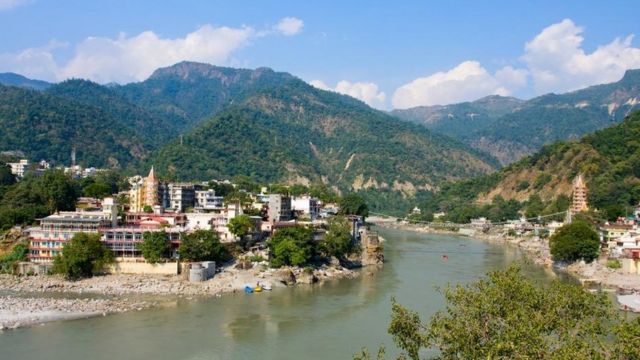Ganges River vital

The Ganges River Vital Lifeline for South Asia
The Ganges, one of the most revered and sacred rivers in the world, is not just a geographical entity but a symbol of spiritual and cultural significance for South Asia. Flowing through India and Bangladesh, the Ganges holds unparalleled importance for the people of the region. In this article, we will delve into the reasons why the Ganges River Vital for South Asia, exploring its ecological significance, cultural and spiritual importance, its role in agriculture and the economy, as well as the challenges it faces, and the ongoing conservation efforts to preserve its sanctity.
Introduction to the Sacred Ganges River
The Ganges River, known as the Ganga in Hindi, is a transboundary river of Asia that flows through India and Bangladesh, ultimately emptying into the Bay of Bengal. It is not merely a physical river but a spiritual and cultural icon, deeply entrenched in the hearts and minds of the people of South Asia for centuries.
Ecological Significance of the Ganges River
The Ganges River holds immense ecological significance, fostering diverse ecosystems and supporting a myriad of flora and fauna. Its significance can be seen in the following aspects:
1. Biodiversity: The river and its basin host a rich biodiversity, including numerous species of fish, amphibians, and invertebrates, contributing to the overall ecological balance of the region.
2. Wetlands and Floodplains: The Ganges River vital supports wetlands and floodplains, serving as critical habitats for migratory birds and other wildlife, and providing natural flood control during monsoon seasons.
3. Riparian Ecosystems: The river’s banks support lush riparian ecosystems, fostering a variety of plant species that play a crucial role in maintaining soil fertility and preventing erosion.
4. Aquatic Life: The Ganges is home to various aquatic species, including the endangered Ganges river dolphin, highlighting the river’s significance in preserving unique and threatened wildlife.

Cultural and Spiritual Importance of the Ganges
The Ganges holds profound cultural and spiritual significance for the people of South Asia. Considered sacred by Hindus, the river is worshipped as the goddess Ganga, and millions of people partake in pilgrimages and rituals along its banks. The Bhagirathi River begins at Gomukh, near the Gangotri Glacier. Its significance can be recognized from the following aspects:
1. Spiritual Cleansing: The Ganges is believed to have the power to purify sins and grant spiritual liberation, leading to millions of devotees immersing themselves in its waters as a form of spiritual cleansing.
2. Rituals and Festivals: Various religious ceremonies, rituals, and festivals are conducted on the banks of the Ganges, symbolizing the cultural and spiritual fabric of the region.
3. Cultural Heritage: The river has inspired a rich tapestry of art, literature, and music, serving as a muse for countless poets, writers, and artists across generations.
The Ganges River Vital Role in Agriculture and Economy
The Ganges River Vital lifeline for agricultural practices and the overall economy of the region. Its role can be understood through the following aspects:
1. Agricultural Fertility: The fertile plains along the Ganges support extensive agricultural practices, contributing significantly to the production of rice, wheat, and other crops, thereby sustaining the livelihoods of millions of farmers.
2. Irrigation and Water Supply: The river serves as a primary source of irrigation for agricultural lands, enabling farmers to cultivate crops even during dry seasons, ensuring food security and economic stability.
3. Trade and Commerce: The Ganges River acts as a major trade route, facilitating the movement of goods and people, thus contributing to regional trade and commerce, and fostering economic growth along its banks.
Challenges and Conservation Efforts for the Ganges River
Despite its sacred status and crucial ecological and economic role, the Ganges River faces numerous challenges, including pollution, over-extraction of water, industrial waste, and human encroachment. To ensure the preservation of this Ganges River vital lifeline, various conservation efforts are in progress, addressing the following aspects:
1. Pollution Control: Initiatives are in place to control and reduce industrial and domestic pollution, promoting the proper treatment of wastewater and the adoption of eco-friendly practices.
2. River Restoration: Projects focusing on the restoration of the river’s natural flow and the rejuvenation of its ecosystems aim to revitalize the Ganges and protect its biodiversity.
3. Community Participation: Community-led conservation efforts are fostering awareness and active participation among local communities, emphasizing the importance of preserving the Ganges for future generations.
Conclusion
In conclusion, the Ganges River stands as a testament to the intertwined relationship between nature, culture, and spirituality in South Asia. Its Ganges River Vital role in the region’s ecology, culture, and economy cannot be understated. As we strive to address the challenges facing the Ganges, it is imperative to recognize the collective responsibility of safeguarding its sanctity and ensuring its sustainable existence for generations to come.
Know More about Ganges River.
What are The Religious Places of Ganges River?
When Did The Ganges River Basin Become a Focus?
Where is The Ganges River Located?
Who Were The Key Historical Figures and Civilizations of The Ganges River?
How to Reach Ganges River?




